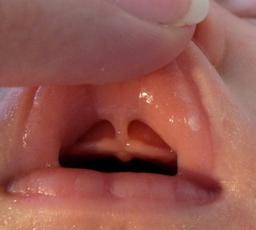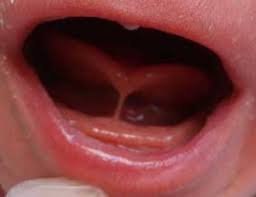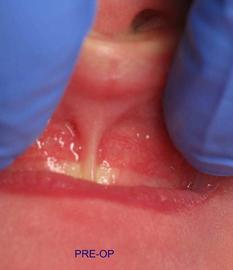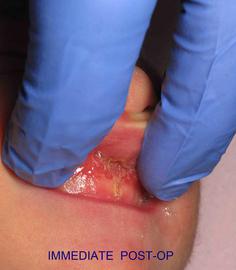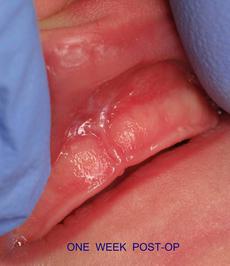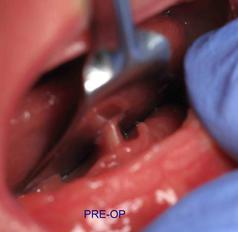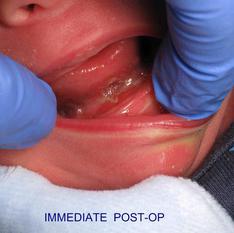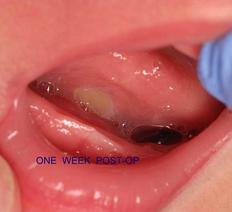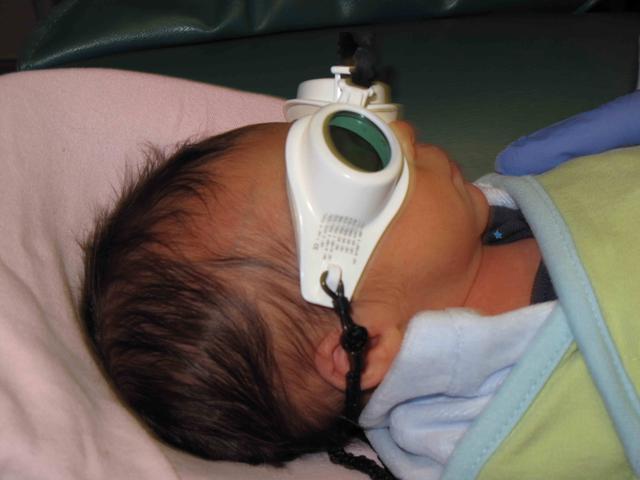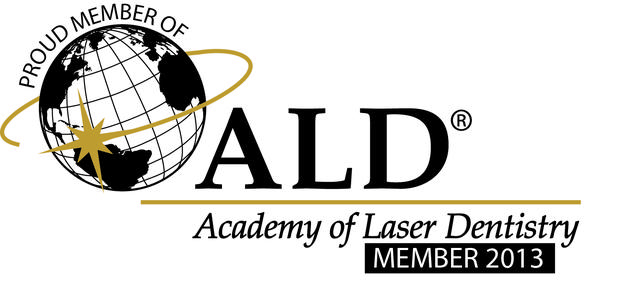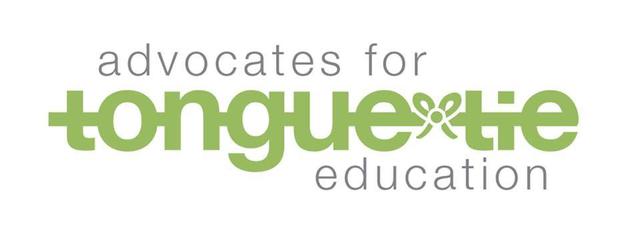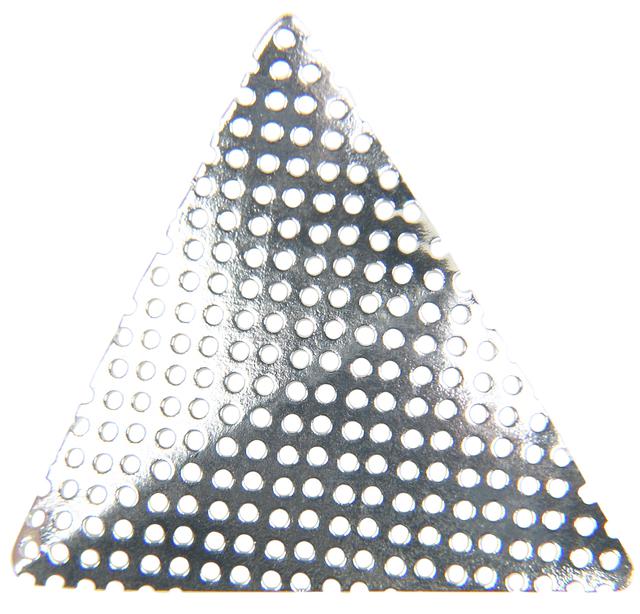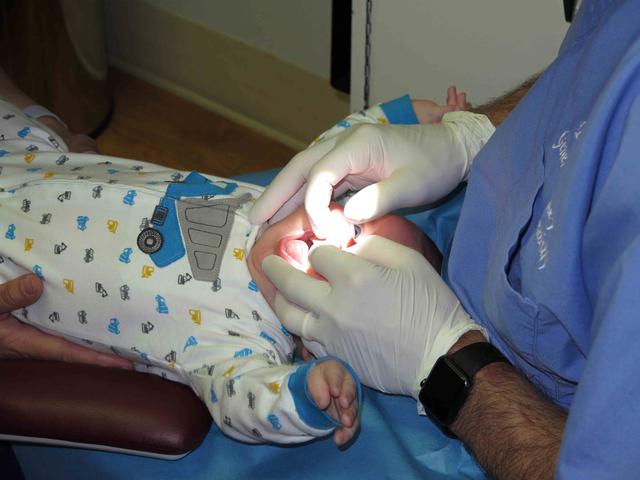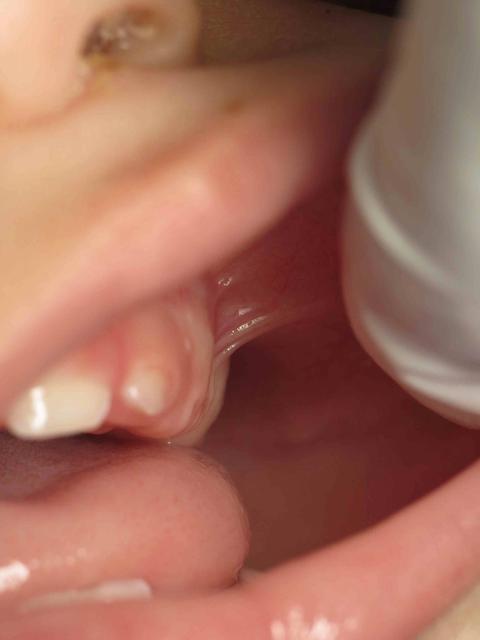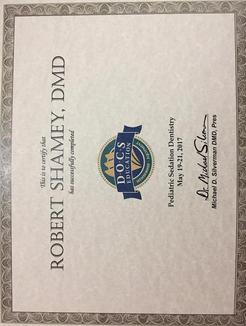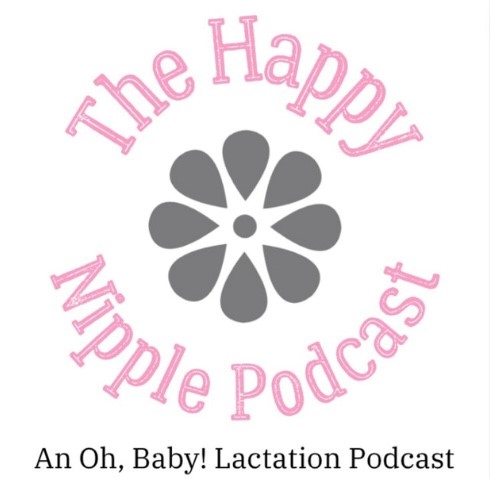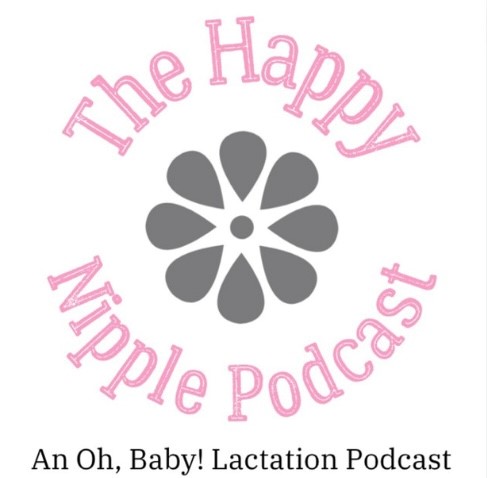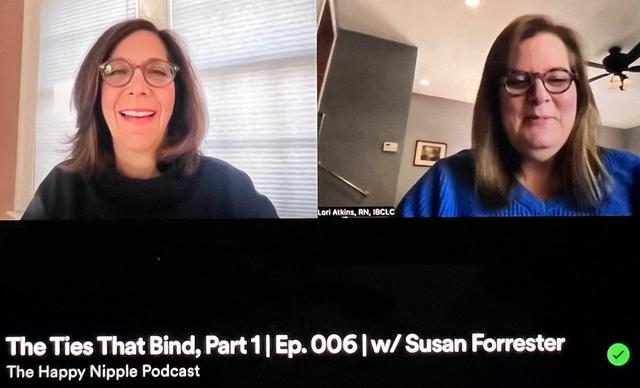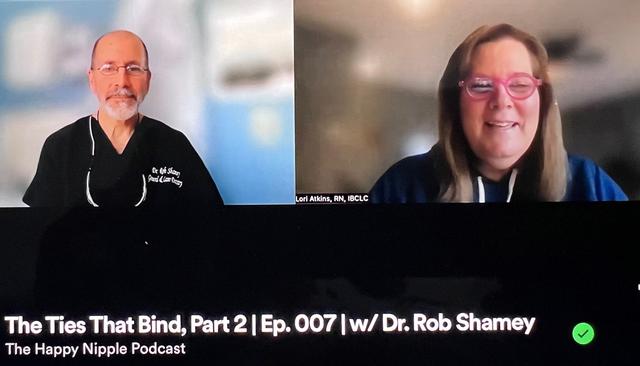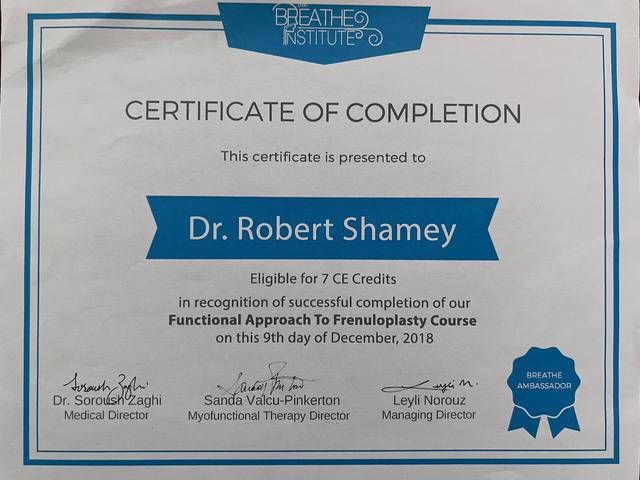Smiles for Health and Healing
LIP-TIE TONGUE-TIE
and
BREASTFEEDING
BREASTFEEDING SHOULD BE GRATIFYING FOR MOM AND EFFECTIVE FOR BABY!
Symptoms
MOM'S
- Cracked blistered and bleeding nipples
- Plugged ducts
- Discomfort while nursing
- Sleep deprivation (Because baby is not able to nurse efficiently, they may compensate by nursing more often including at night)
- Thrush/mastitis
- Compromised milk supply
BABY'S
- Reflux or colic
- Difficulty latching
- Gumming or chewing nipples
- Gassy
- Poor weight gain
- Making clicking noise while nursing
- Leaking at lips while nursing
- Excessive drooling
- Choking on milk or popping off the breast to gasp for air
TONGUE-TIE
LIP-TIE
Class IV(LK) Tongue-tie
Class IV(LK) Lip-tie
Simply, a lip or tongue tie is a frenum. A frenum is that piece of skin under the upper lip or under the tongue that is left over from embryological development. Frenum can also be found farther back in the mouth attaching to the cheeks called buccal frenum. They are usually only considered a "tie" when they limit the range of motion of the lip, tongue or cheeks, not allowing your infant to achieve a proper latch. The "ties" are classified (using Kotlow Classifications) from I-IV with the Class IV attaching to the tip of the tongue. While the Class I lingual frenum tie attaches at the base of the tongue rather than the tip, it can have a submucosal component sometimes called a "posterior tongue-tie". This can be very restrictive, limiting the range of motion of the tongue and be as dysfunctional as the Class IV.
Current research has shown that tight frenum left untreated can lead to swallowing and digestive issues, higher incidences of dental caries, airway issues and sleep apnea, speech issues, poor upper and lower jaw development leading to facial malformations and malocclusion.
BREASTFEEDING
COMPLICATIONS WITH LIP TIE AND TONGUE TIE
CORRECTING LIP TIE AND TONGUE TIE WITH SOLEA CO2 LASER
This little guy came into the world three weeks early at 5 lbs. 11 oz. He had a poor latch and was not able to create a vacuum to obtain enough milk and his mom was in a lot of pain. He had a Class IV(LK) maxillary lip-tie and a Class I tongue-tie with a sub mucosal component (posterior tongue-tie). He had his revisions with the Solea CO2 laser at 10 days old and by one month of age he weighed 9 lbs.
YOUR CHILD'S TREATMENT
To make a diagnosis and determine the needs of your child, a thorough oral exam and a history of yours and your child's nursing experience will be obtained. You and Dr. Shamey will sit knee to knee as your child sits in your lap with it's head and shoulders in his lap. This is the best position for him to evaluate any restricted oral tissue and for you to visualize the tongue and lip tie, and possibly any buccal ties.
Once a diagnosis has been made and you consent to treatment, your child will be brought into the treatment room. For your child's safety and security they will be gently placed in a warmed swaddle blanket and fitted for protective eye-wear. To follow Laser Safety Protocol, only Dr. Shamey, his assistant and your child are allowed in the treatment room.
The actual procedure takes about 30 seconds to complete and your child will be away from you for only about ten minutes as you wait in the waiting room. This is the time it takes to create a safe and secure environment for your child and to obtain before and after photographs. You will be asked not to feed your child for about 90 minutes before the appointment in order that they have a desire to nurse immediately following the revisions. The Solea CO2 laser is state-of-the-art and the most precise, is bactericidal and leaves a bloodless, virtually painless wound that heals quicker than other methods of release.
AFTER CARE
It is of the utmost importance to follow the home-care instructions given to you following the release of your infants oral restrictions. Not doing so would allow the healing tissue to reattach.
As your infant has probably compensated for their restrictions, their facial and body muscles often need to be retrained for proper function after the releases. Following up with your Lactation Consultant (IBCLC) and your Pediatric Chiropractor with knowledge of lip and tongue-tie and/or your Craniosacral Therapist will be important. Rarely is having the surgical procedure enough to correct the original breastfeeding problems.
FEE FOR SERVICE
Our fee for infant release is $968.00, this includes the consult, the surgical procedure whether it involves one or seven sites (lips, tongue or buccal frenum), after care training, and any follow up evaluation either with video or in person; 24 months through adulthood, $968.00 per site not to exceed $1936.00 regardless of the number of sites to be released. Our office accepts most dental insurances but you will need to make sure your child is listed on your plan. Rarely do they cover 100% of the service, usually 50-80%. We also offer an interest free payment plan through Care Credit. Dr. Shamey is a MassHealth provider for children 14 years of age and younger.
The Release Procedure
performed by Dr. Shamey
TRIANGLE OF CARE
IBCLC
BODY WORKER RELEASE PROVIDER
The release of the frenum, that piece of embryological tissue under the lip, cheeks, and tongue that did not shrink away during the second trimester of development, does not mean that problems with breastfeeding will miraculously go away. Your child will be dealing with muscle memory, meaning they are comfortable moving their lips and tongue and cheeks the way they have been since swallowing in-utero. The period of time spent head down in the pelvic floor while in-utero as well as the birth process, whether vaginal or C-section, can have an effect on muscles and bones of the head and neck. An imbalance of the bones and muscles of the head and neck can affect your child’s ability to be physically comfortable while breast feeding. Also, this imbalance can effect the range of motion of the tongue and cheeks directly effecting the latch.
For truly successful breastfeeding, lactation support by a lactation consultant trained specifically in lip-tie and tongue-tie is of primary importance. These individuals usually have the letters IBCLC after their names. This support should be in place BEFORE a release to rule out all other causes of poor feeding. Also, to support lactation, support milk supply, address ways the baby has been compensating for not being able to move their tongue and lips effectively, and to stimulate the muscles that haven’t been able to move effectively due to the restrictions. This helps both the parents and the baby be less stressed during the post release wound care. Follow-up with the IBCLC AFTER the release is critical to help manage milk supply, suck training to overcome muscle memory, and provide exercises to help eliminate compensations that both the mother and baby have been relying on before the release.
Treatment BEFORE and AFTER the release from a body worker, for example, a pediatric chiropractor or a craniosacral therapist (CST) is the third part of the “triangle of care”. These individuals will help gently eliminate tensions from imbalanced muscles which can affect neck, tongue, and jaw range of motion, also delicately realign skeletal structures that may impinge upon the cranial nerves that affect breathing, digestion, heart rate, and muscles of the tongue, jaw, and face. The muscle imbalances will also create compensations that affect your child's oral function and their ability nurse effectively.
Only when all three of these modes of treatment are in place will true success be achieved. Release in my office will not be performed without proven lactation support prior to treatment.
SUCCESSFUL BREASTFEEDING
Buccal Ties
EXPERIENCE
Early on in his 37 year career as a general dentist, Dr. Shamey had performed frenectomies on adults and adolescents using scalpel and sutures. He then added laser technology to his practice in 2013 with a diode laser. As technology changed, so did Dr. Shamey and in 2014 he incorporated the Solea CO2 laser into his practice which he uses exclusively for all frenectomies. He has been performing infant frenectomies since 2015 and completes approximately 300-400 procedures per year.
He is accredited with the Academy of Laser Dentistry and regularly attends continuing education courses related to lip and tongue tie issues. In July of 2018 he presented on the "Release Technique" at the first Connecticut Tongue-tie and Oral Function Symposium.
THE EXAM
Following the release--
Back to mom for "breakfast"
Pre-Release Exercises
This video shows some excellent exercises for your baby if you haven't made a connection with a bodyworker yet. To be performed before you bring your baby for the release visit.
International Consortium of Ankylofrenula Professionals
FURTHER YOUR EDUCATION:
Dr. Shamey's Affiliations
http://KIDDSTEETH.COM
Watch these informative podcasts by typing "Happy Nipple Podcast" into your browser or into your Spotify app

